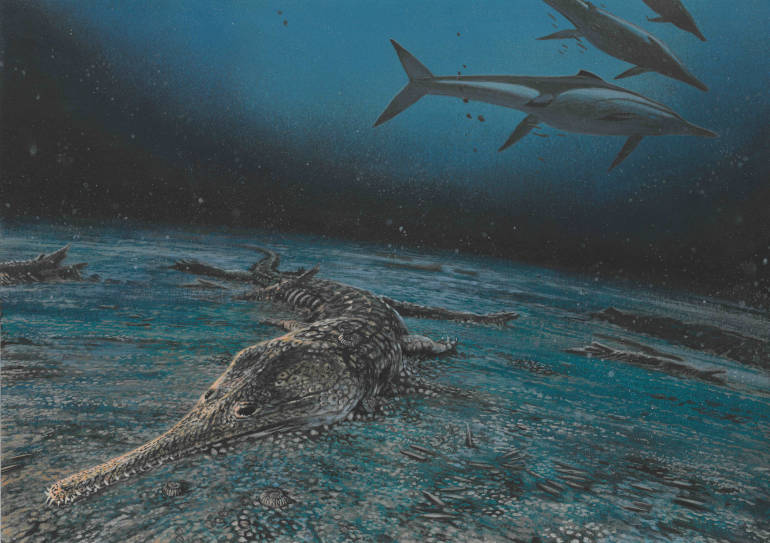We are pleased to announce that Dr Alex Dunhill, Associate Professor of Palaeobiology, UK, has been appointed as the PalAss Exceptional Lecturer for 2024/25.
Species loss, community collapse, and ecosystem recovery during times of mass extinction
Our planet has suffered repeated mass extinctions that have shaped the evolutionary history of biodiversity through time. Although current state-of-the-art research has given us a thorough understanding of the causes and consequences of mass extinction events, existing research ignores the role of ecosystem structure in providing resilience to environmental change. Ecological theory states that primary extinctions, which are a function of stress type or organism sensitivity, can lead to cascading secondary extinctions where species perish because they are unable to meet energetic requirements from available prey. Extinction selectivity studies always assume extinctions are primary despite ecological theory hinting that many victims of mass extinctions are unlikely to have become extinct as a direct effect of abiotic stress, but probably did so in response to cascading secondary effects. Furthermore, whilst almost all major environmental change events of the Palaeozoic and Mesozoic resulted in catastrophic losses of biodiversity, more recent events in the Cenozoic only lead to modest or no rise at all in extinction rates despite profound environmental changes. A number of Earth system mechanisms have been proposed for the lack of Cenozoic mass extinctions, relating to carbon cycle buffering via supercontinent fragmentation and calcareous nannoplankton evolution. However, it has also been hypothesized that modern community structure was established in the aftermath of the Cretaceous-Palaeogene (K/Pg) mass extinction and thus the lack of Cenozoic mass extinctions is a function of increased resilience of marine ecosystems. In this lecture, I will detail the cutting-edge advancements in ecological modelling that I am applying to the fossil record. This is to investigate how marine ecosystem structure changed through the Phanerozoic and whether modern marine ecosystems are more resilient to major disturbance in comparison to ancient communities in an attempt to shed light on the resilience of marine communities to future climatic stress.
Dr Alex Dunhill - 2024/25 PalAss Exceptional Lecturer

A deadly Toarcian sea. Artwork by James Mckay © The Palaeontological Association.
Want Alex to visit your institution?
We now invite interested institutions to apply to host Alex via the Association’s website. Please provide a timeframe (between September 2024 and May 2025) during which you would like Alex to give a lecture at your institution. The list of interested institutions will be forwarded to Alex on 1st June 2024, although any applications from institutions submitted after this date will still be considered depending on the remaining time and budget. The Association will pay for any reasonable travel costs incurred by the Exceptional Lecturer in visiting each of the host institutions (up to a maximum of £500 per lecture). The host institutions are expected to cover costs for accommodation (where necessary) and hospitality.
